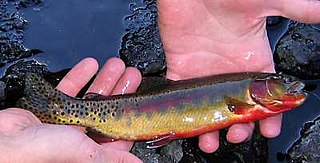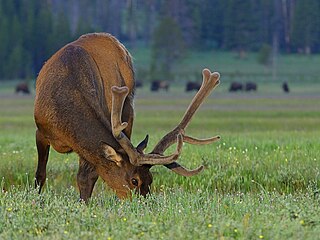 W
WYellowstone National Park is home to four amphibian species and seven species of reptiles. None of the species are endangered or threatened. The glacial nature of and dry conditions in Yellowstone are likely responsible for the relatively low number of amphibian and reptile species in Yellowstone,.
 W
WThere are at least 16 large and 45 small mammal species known to occur in Grand Teton National Park, an American national park in northwestern Wyoming. Species are listed by common name, scientific name, and relative abundance.
 W
WThe state of Wyoming, being a land locked state, has a wide variety of freshwater fish in its lakes, rivers, and streams.
 W
WThere are at least 18 large mammal and 103 small mammal species known to occur in Wyoming.
 W
WThis list of birds of Wyoming includes species documented in the U.S. state of Wyoming by the Wyoming Game and Fish Department (WGFD) supplemented by eBird data through July 2020. The list from both sources contains 449 species. Of them, 115 are classed as accidental, and eight species have been introduced to North America.
 W
WYellowstone National Park in the northwest United States is home to a large variety of mammals, birds, fish, reptiles and amphibians, many of which migrate within the Greater Yellowstone Ecosystem. These animals are a major park attraction.
 W
WThere are at least 67 species of mammals known to live within Yellowstone National Park, a 2,219,791 acres (898,318 ha) protected area in the Rocky Mountains of Wyoming, Montana, and Idaho. Species are listed by common name, scientific name, typical habitat, and relative abundance.
 W
WThere are at least 50 small mammal species known to occur in Yellowstone National Park.